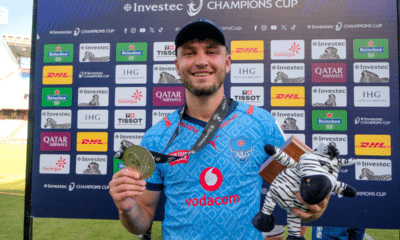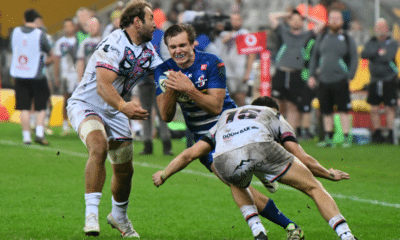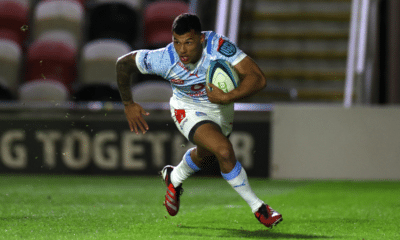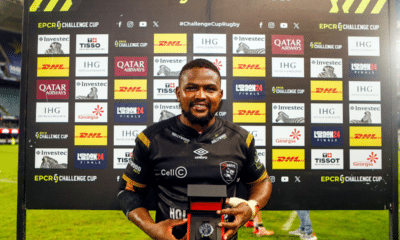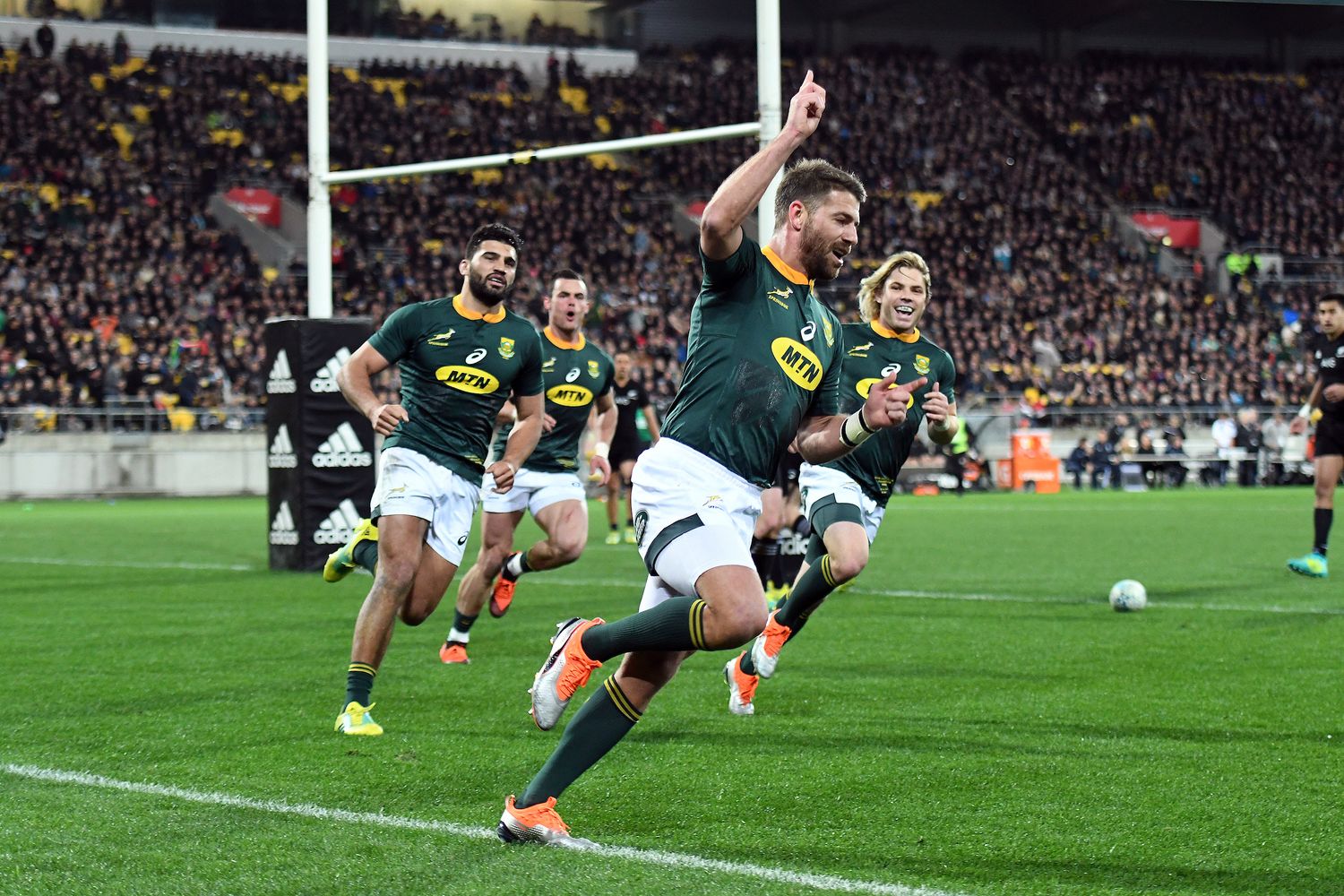
31 December 2019, by: Quintin van Jaarsveld
Springbok Team of the Decade
Legends, workhorses and ground-breakers make up our Springbok XV of the Decade, writes Quintin van Jaarsveld.
So many world-class Springbok rugby players have come and gone over the past 10 years. Many of the all-time greats retired, while the best of the next generation have risen to become legends in their own right. Seven of this year’s World Cup winners cracked the nod, six players have captained South Africa at one time or another while four are centurions.
All players who ran out for the Springboks in Test matches over the past decade were considered. However, emphasis was put on performances and achievements during the given time frame (see the head-to-head flyhalf battle for a key example of this criteria).
Three men immediately came to mind: Frans Steyn, Pat Lambie and Le Roux. For the illustrious careers they had, the versatile Steyn and Lambie started just five and nine Tests respectively in the No.15 jersey in the past decade. A Griquas standout at the time, Le Roux made his Test debut in the 44-10 win over Italy in Durban in 2013 and never looked back.
With his attacking flair and dependability under the high ball, he was the first-choice fullback for the 2015 and 2019 World Cups. He’s played 61 Tests, second on the all-time list behind Percy Montgomery (102) as far as fullbacks are concerned, has scored 12 tries and created many, many more.
Cheslin Kolbe has been a revelation since Rassie Erasmus gave him an opportunity to prove himself at the highest level last year. A lightning bolt of attacking brilliance, he’s a human highlight reel and arguably the best right-wing in the game after starring in Japan. He’s only getting starting, though. Pietersen has an unrivalled body of work at No.14.
While 2007 was his best season, when he played an important role in the Boks’ World Cup triumph, he was a consistent performer up until his final appearance in the 37-21 loss to England at Twickenham in 2016. A polished predator who could do it all, he ran in 24 tries in his 70-Test career.
The most experienced and arguably the best Bok outside centre in history, 18 of his 72 appearances in the Green and Gold came in the last decade. Strong, skilful and smart with ball-in-hand, he scored 32 tries, the most by a South African midfielder. As dynamic as he was on attack, his true value was off the ball, where he wasn’t just rock-solid in the most challenging channel of all but an unrivalled defensive organiser as well. Under his watch, the Bok backline was as defensively sound as it’s ever been.
There were a couple of strong contenders – the multi-skilled Steyn, who in many ways set a new standard of a South African No.12, and incumbent Damian de Allende, whose been a midfield mainstay since debuting in 2014.
Always a handful, he had a banner 2019 and was the best inside centre at the World Cup. De Villiers was as good if not better than Steyn and De Allende and led the Boks with distinction from 2012 (10 years after his first appearance) to 2015. A true legend and fighter who came back from several serious injuries and inspired those around them.
Simply put, the best wing in Springbok history. Like his long-time teammate Pietersen, his best single-season predates this decade, when he was named 2007 World Player of the Year, and while he did go through a dry spell, he proved that form is temporary but class is permanent when he equalled All Blacks great Jonah Lomu’s all-time World Cup record of 15 tries in 2015. A magic man who could create something out of nothing and the Springboks’ all-time top try-scorer with 67, he bowed out after the shock 20-18 loss to Italy in Florence in 2016.
Precious little separates what Morné Steyn and Pollard have done in the Green in Gold over the past decade. Steyn’s record-breaking performance against the All Blacks, when he scored all 31 of South Africa’s points in the win in Durban, came in 2009, but even so, he was a point-scoring machine and tactical general up until his last outing in 2016. Pollard, who debuted in 2014 as the-then World Rugby Junior Player of the Year, is a more well-rounded pivot, although he thrives when he plays flat and takes the ball to the line.
The key difference, ultimately, is Pollard’s World Cup winner’s medal and the role he played in the 2019 triumph. He scored a tournament-high 69 points, including a final-record 22, but it was his clutch Man of the Match performance in the 19-16 semi-final win over Wales, which saw him slot all five of his kicks off the tee, that was the most crucial.
Faf de Klerk has taken ownership of the No.9 jersey in recent years and has become known as a giant slayer with his tenacious, pit bull-like tackling. Initially licensed to thrill, he was a headache around the fringes before a return to the Boks’ traditional tactical game plan saw him having to curb his instincts and go to the boot, which he’s done well.
However, nobody’s bossed the game better from nine than Du Preez with his pinpoint tactical-kicking and exceptional vision. He was seemingly always two steps/plays ahead of the rest and captained the Boks on four occasions, including in his final Test, the 20-18 loss to the All Blacks in the 2015 World Cup semi-final at Twickenham.
He’s been a dominant figure since being unleashed on the international stage against Australia in Perth in 2012. But after a career-defining 2019, Vermeulen has entered the discussion for the greatest eighthman in Springbok history. A hard, uncompromising warrior of a back-rower, he’s been one of the key bruisers in the Bok pack for a number of years. Somehow, he manages to ramp up the physicality and take on even more responsibility every season.
A respected leader, he captained the Boks to their first Rugby Championship title in Siya Kolisi’s absence this year and cemented himself as a legend with his Man of the Match performance in the World Cup final.
A tricky choice in which one could be swayed by quality or quantity, although they’re not mutually exclusive. Juan Smith, who’s regarded by many as the best blindside flank in Springbok history, played just eight of his 70 Tests after the turn of the decade, the last being the 33-31 win over Argentina in Salta in 2014.
Incumbent Pieter-Steph du Toit’s already challenging for No.7 GOAT status after making the jersey his own in recent years, winning two South African Player of the Year awards and being named 2019 World Rugby Player of the Year. Louw, though, has been the ultimate workhorse, debuting in 2010 and retiring after the World Cup final. With 76 appearances, he’s EARNED a place in this team.
Few would argue that Schalk Burger was the best player to don the No.6 jersey, an ironman who pushed a furious pace from the first minute to the last over 11 seasons. His ruthless aggression was the stuff of nightmares for all who opposed him, he was a ball-snatcher at the breakdown and had the distribution skills of a halfback. However, he’ll be the first to acknowledge that his former Stormers teammate has forged a transcendent legacy that supersedes his own Hall of Fame-worthy career.
As the first black Springbok skipper and first black captain to lift the Webb Ellis Cup, distinctions he earned on merit as a fantastic player and leader, Kolisi’s a symbol of hope, the personification of class and will inspire generations of black youth to take up the sport and pursue their own Bok dreams.
Even excluding his heroics in the triumphant 2007 World Cup campaign, which included a Man of the Match performance against England in the final, Matfield made an unrivalled contribution to Springbok rugby at No.5 over the past decade. One of the all-time greats, he was a cornerstone of the next two World Cup squads. That Heyneke Meyer lured him out of retirement in 2014, after he’d bowed out following the 2011 global showpiece, says it all.
There was no-one else like him, and there hasn’t been since he retired for good after captaining the Boks to a 24-13 win over Argentina in the bronze medal match. That says a lot given the second-row riches the Boks currently possess, but for the lineout genius that he was, and for those extra two years he gave to the cause, Matfield stands tall.
Etzebeth has owned the No.4 jersey since he kicked the doors down in the first Test of the 2012 season against England in Durban, where the gargantuan gave the wider rugby world the first glimpse of the “legalised violence” that would become the hallmark of his career to help the Boks secure a 22-17 win.
A physical specimen seemingly carved out of granite, Etzebeth’s one of the modern-era’s apex enforcers and an outstanding athlete who’s a pillar of strength in the lineouts. He’s racked up 85 Tests, captained his country in a dozen of them and has left a trail of bodies in his wake.
One of the best scrum anchors in Springbok history, Du Plessis made his debut back in 2007 and was a late call-up to the World Cup squad in place of the injured CJ van der Linde. But it was in 2010, after having come off the bench in most of his 14 Test outings up to that point, that he cemented himself as the starting tighthead. A qualified doctor, he was one of the fittest, most consistent and durable Boks in recent history and at 37, has joined the Lions for the 2020 Super Rugby season. With 70 Tests to his name, he’s the most-capped Bok tighthead ever.
John Smit, with 111 Tests, is the most-capped and decorated hooker in Springbok history, having captained the team with great success, including guiding them to World Cup glory in 2007. However, he retired after the 2011 World Cup. Malcolm Marx has played four seasons of Test rugby since making his debut against New Zealand in 2016 and has been one of, if not the best hooker in the world for much of that time.
The man in the middle of these two titans trumps them both as he played six of his nine seasons over the past decade and was a force of nature throughout. Like Marx, Du Plessis was arguably the best in the business up to his last Test in 2015 – a ball pilferer on top of an exceptional traditional No.2.
There can be only one – the constant, the gold standard, the “Beast.” For more than the past decade (13 seasons to be exact), Mtawarira was an unstoppable force in the No.1 jersey…a tormentor of tightheads. Over that time, he became a global superstar showered with chants of “Beeeeast” wherever he roamed. He became a bona fide legend and the most-capped prop in Springbok history (117), finishing his unrivalled career with one last dominant display against England in the 2019 Rugby World Cup final. A sure-fire future Hall of Famer.
MORE RUGBY















